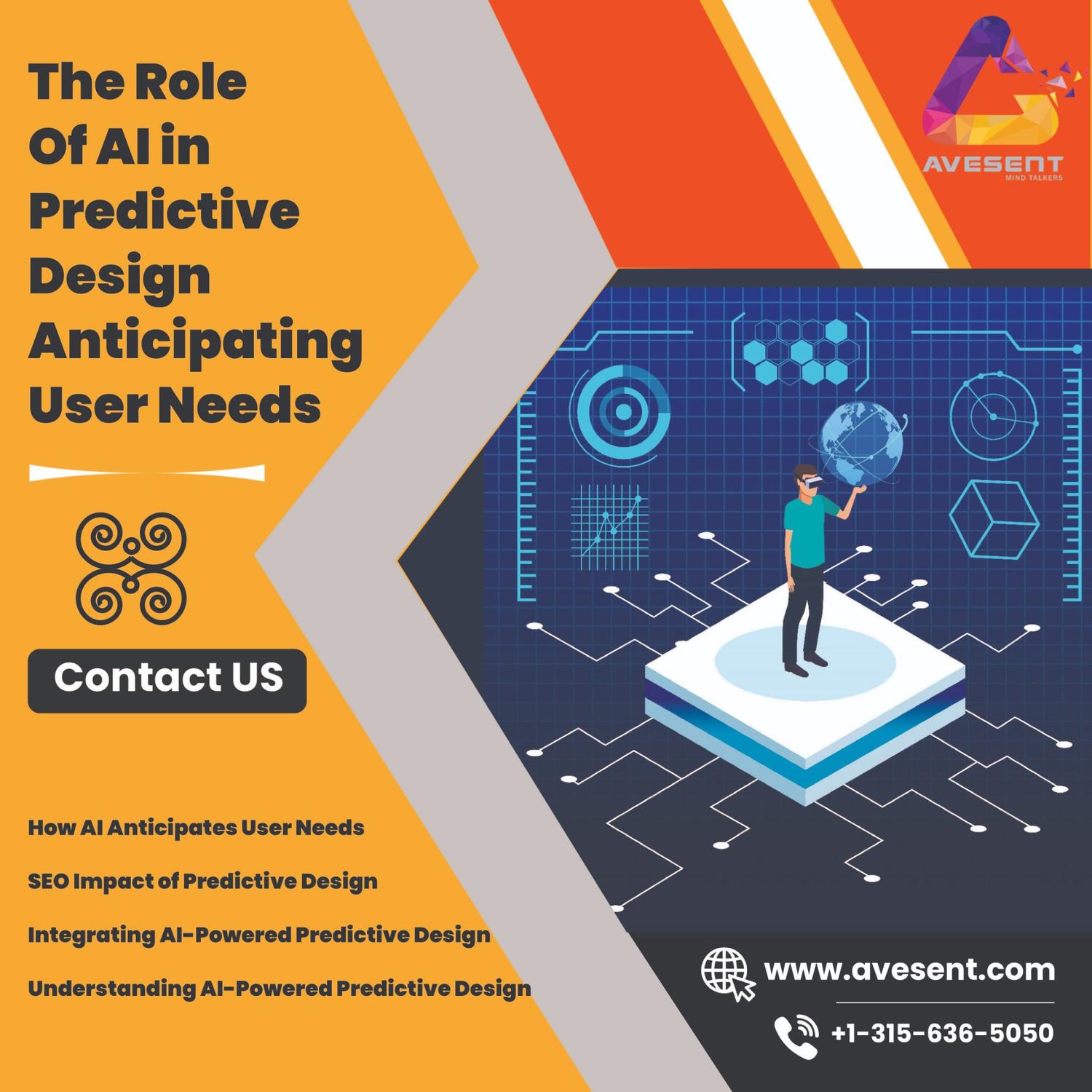Revolutionizing Design: AI’s Role in Predictive Design to Anticipate User Needs
In the realm of design, the integration of AI (Artificial Intelligence) is transforming the landscape, offering unparalleled capabilities to anticipate and fulfill user needs. AI-powered predictive design is a strategic strategy that anticipates and accommodates user preferences, revolutionising user experiences beyond technology. Let’s explore how AI predicts user demands and affects the future of design as we delve into the nuances of AI-driven predictive design, its impact on user-centric experiences, and its importance in SEO (Search Engine Optimisation).
Understanding AI-Powered Predictive Design
1. AI’s Role in Design Evolution
AI-driven predictive design involves using machine learning algorithms to predict user behaviors, preferences, and needs, shaping design elements accordingly.
2. Anticipating User Needs
Predictive design anticipates user needs by analyzing vast datasets, user interactions, and historical patterns to tailor experiences proactively.
AI-Enhanced User-Centric Experiences
1. Personalized User Interfaces
AI predicts user preferences for personalized UI/UX elements. Tailored interfaces enhance user engagement and satisfaction.
2. Dynamic Content Recommendations
AI-powered content recommendations adapt to user behavior. Dynamic recommendations anticipate user interests, improving content relevance and engagement.
How AI Anticipates User Needs
1. Data-Driven Predictions
AI analyzes user data patterns. Historical data aids in predicting future user actions, allowing design elements to cater to anticipated needs.
2. Behavioral Analysis for Customization
Behavioral analysis guides customization. AI identifies behavioral cues to dynamically adjust design elements, aligning with user expectations.
SEO Impact of Predictive Design
1. Enhanced User Engagement Signals
AI-driven personalized experiences boost engagement. Improved user interaction positively influences SEO signals and rankings.
2. User-Centric SEO Benefits
User-centric design aligns with SEO goals. Satisfied users are more likely to stay longer on sites, reducing bounce rates and signaling relevance to search engines.
Integrating AI-Powered Predictive Design
1. AI-Enabled User Journey Mapping
Utilize AI for user journey mapping. Predictive insights facilitate mapping user paths, optimizing experiences, and improving conversions.
2. AI-Infused Content Creation
Leverage AI for content creation. AI-generated content aligns with predicted user preferences, improving engagement and SEO relevance.
Predictive Design Trends in AI
1. Hyper-Personalization
Hyper-personalization through AI advances. Anticipating individual user preferences drives tailored experiences for higher engagement.
2. Real-Time Adaptation
Real-time adaptation based on user behavior. AI swiftly adjusts design elements to meet evolving user needs dynamically.
Measuring AI’s Impact in Predictive Design
1. Analytics and Performance Metrics
Monitor AI-driven predictive design performance. Analyze metrics such as user interactions, conversions, and time spent to evaluate impact.
2. SEO Analytics and User Behavior
Align SEO analytics with user behavior. Track SEO metrics alongside user-centric behaviors influenced by AI-enhanced design.
Conclusion
AI’s integration into predictive design isn’t just about innovation; it’s a transformative approach that places user needs at the forefront. As AI continues to evolve, its ability to anticipate and fulfill user needs reshapes the design landscape, offering personalized and engaging experiences.
For designers and businesses embracing AI-driven predictive design, the fusion of technology and user-centricity isn’t merely a trend; it’s a strategic move that not only elevates user experiences but also positively impacts SEO by enhancing user engagement and relevance in the digital landscape.




